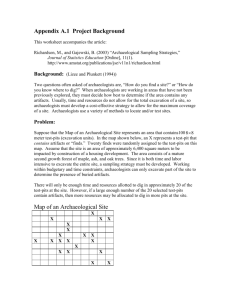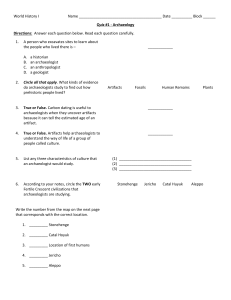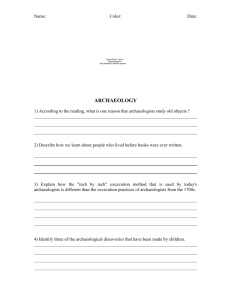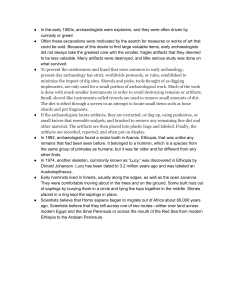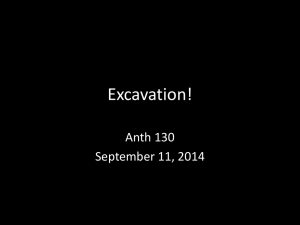CHAPTER 6: DOING FIELDWORK: WHY ARCHAEOLOGISTS DIG
advertisement
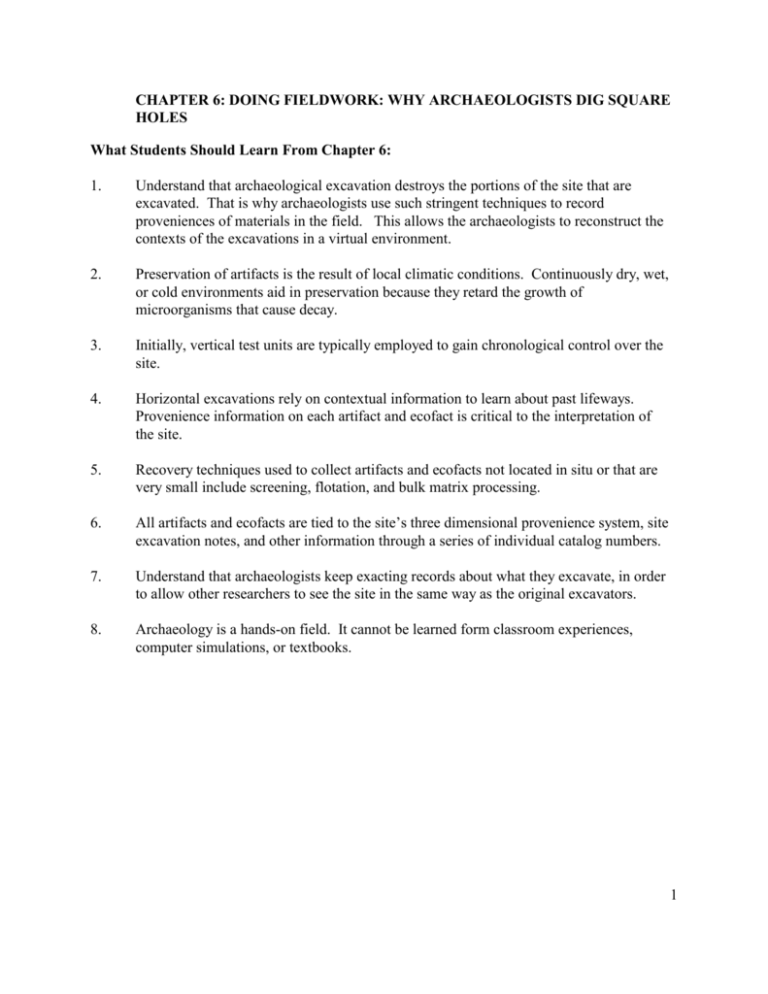
CHAPTER 6: DOING FIELDWORK: WHY ARCHAEOLOGISTS DIG SQUARE HOLES What Students Should Learn From Chapter 6: 1. Understand that archaeological excavation destroys the portions of the site that are excavated. That is why archaeologists use such stringent techniques to record proveniences of materials in the field. This allows the archaeologists to reconstruct the contexts of the excavations in a virtual environment. 2. Preservation of artifacts is the result of local climatic conditions. Continuously dry, wet, or cold environments aid in preservation because they retard the growth of microorganisms that cause decay. 3. Initially, vertical test units are typically employed to gain chronological control over the site. 4. Horizontal excavations rely on contextual information to learn about past lifeways. Provenience information on each artifact and ecofact is critical to the interpretation of the site. 5. Recovery techniques used to collect artifacts and ecofacts not located in situ or that are very small include screening, flotation, and bulk matrix processing. 6. All artifacts and ecofacts are tied to the site’s three dimensional provenience system, site excavation notes, and other information through a series of individual catalog numbers. 7. Understand that archaeologists keep exacting records about what they excavate, in order to allow other researchers to see the site in the same way as the original excavators. 8. Archaeology is a hands-on field. It cannot be learned form classroom experiences, computer simulations, or textbooks. 1


